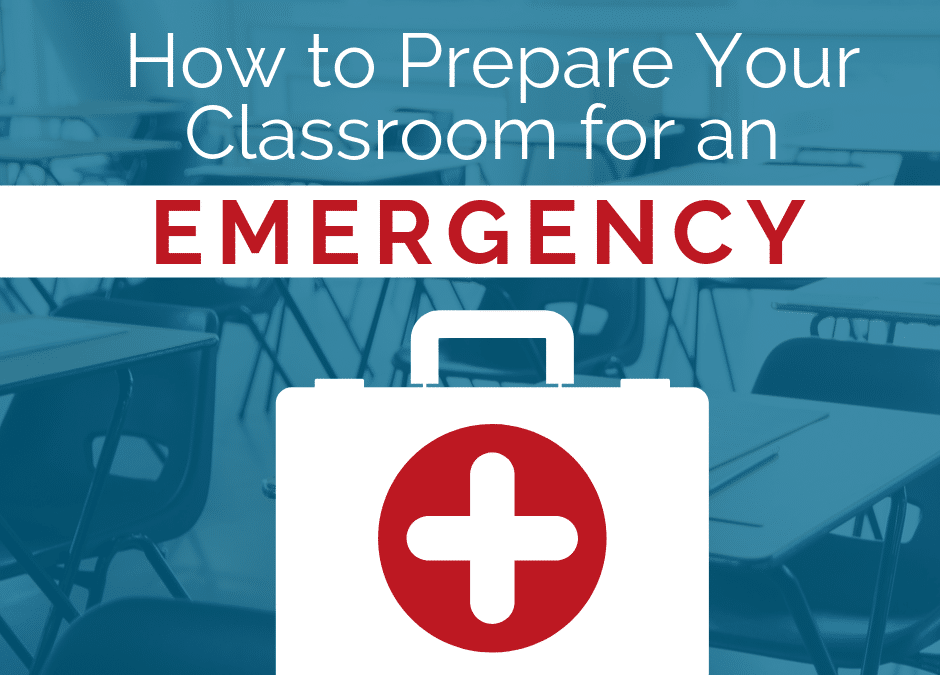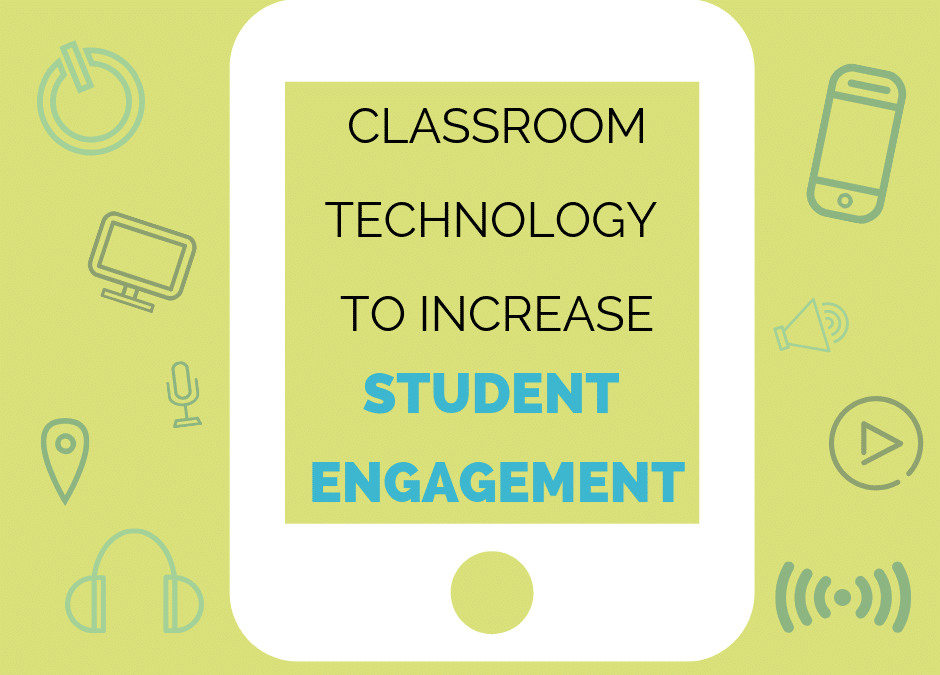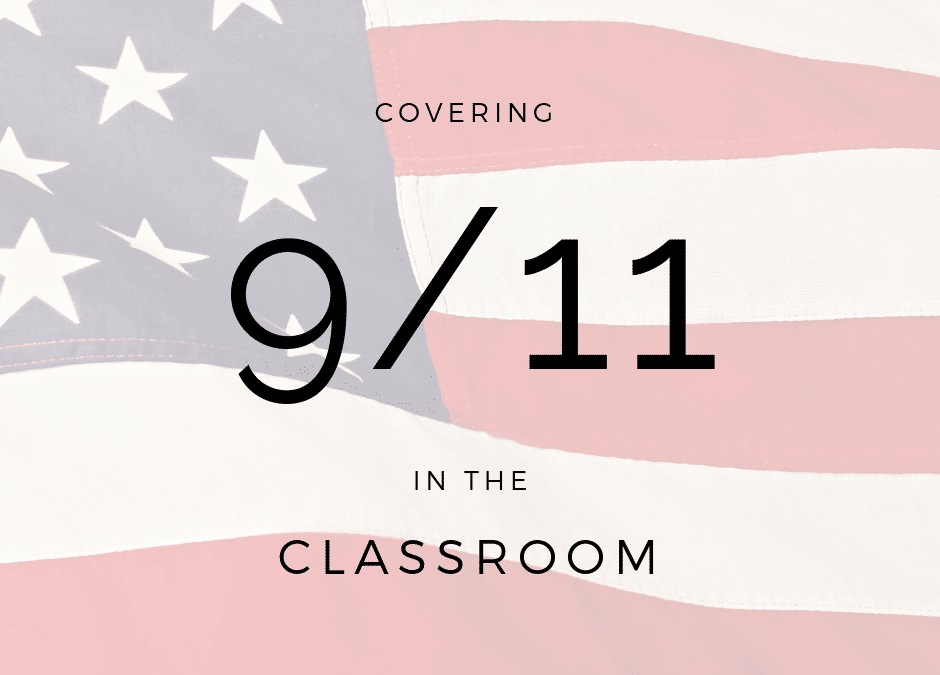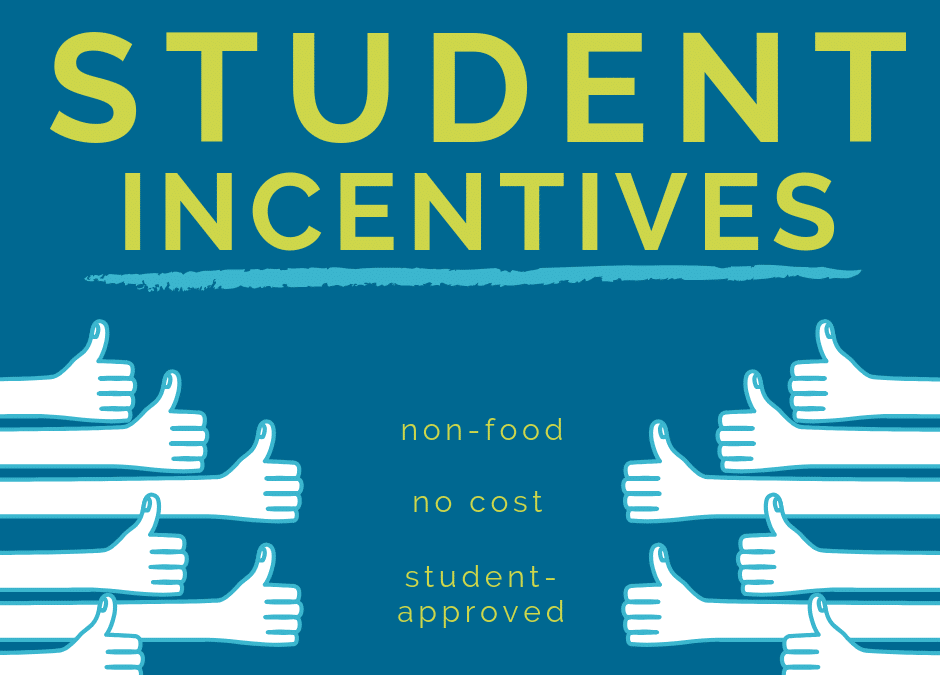
by California Casualty | Educators |
Our Education Blogger is a public school teacher with over a decade of experience. She’s an active NEA member and enjoys writing about her experiences in the classroom.
Emergency situations can happen any place and at any time, that is why it is important to prepare your classroom for any type of emergency.
1. Know Your School Emergency Procedures
Be aware of your building’s emergency procedures, how often drills are practiced, and the expectations of teachers and students during such drills. Your building should have protocols in place in the event of a fire, tornado (in certain regions), earthquake (in certain regions), intruder, and medical emergencies. Take time each month to review procedures with students and go over lockdown/evacuation routes and guidelines.
2. Learn where Medical Equipment is Located
Does your building have an AED (Automated External Defibrillator)? All fifty states have laws or regulations requiring that AEDs be available in public gathering places, and in some states this means schools must keep and maintain AEDs. Find out where the AED is located in your building. If you haven’t been trained on how to use it, ask your administrator to arrange a time when staff can be shown how to use it. If your building doesn’t have one, contact your administrator or school board.
3. Keep an Updated Class Roster With Important Information
Check your class lists to identify students with medical conditions. If necessary, talk with your school nurse about what to do for these students in emergencies. For more serious conditions, have a plan in place with the office and nurse if a serious medical event occurs. In most situations, students with serious medical issues will have some sort of individual health plan (IHP) on file for your reference. If a student who has an ongoing medical condition does not have an IHP, contact your building nurse who can get the process going if the family requests it.
4. Ask Your School to Invest in Emergency Staff Training
If you haven’t been trained in first aid, CPR, or other important emergency procedures recently, ask your administrator or nurse to arrange regularly scheduled training for staff.
5. Emergency Supplies You Should Keep In Your Classroom
These classroom emergency supplies should be stored in the classroom in the event of a shelter-in-place situation due to an emergency or lockdown. If your school does not furnish emergency supplies, ask your building’s parent-teacher organization, a local Boy or Girl Scout troop, or even an area church, for assistance obtaining supplies.
-
- bucket (can be used to store items, can also be used as an emergency restroom)
- tissues and toilet paper
- baby wipes
- disinfecting wipes
- blankets or large towels
- flashlight and batteries
- hard candies
- first aid kit with medical gloves and instruction manual
- folder marked “confidential” with:
-
-
- class list with student pictures
- student emergency contact information
- list of students with special needs and description of needs (i.e. medical issues, prescription medicines, dietary needs)
- list of school emergency procedures
- plastic bags or sheeting
- work gloves
- duct tape
- masks
- whistle
- can opener
- food
- water (pouches or small bottles)
- activities for students (cards, inflatable ball, travel games)
These items should mirror the items you have in your family’s emergency preparedness kit.
6. Create a Classroom “Go Bag”
If your school doesn’t provide one, create a classroom “Go Bag” with necessities. An old backpack works well. Place or hang it near your classroom emergency exit. The bag is meant as a portable supply kit if a building evacuation is necessary. Recommended items include:
-
- water pouches or small water bottles
- first aid kit
- whistle
- baby wipes
- disinfecting wipes
- tissues or toilet paper
- paper, markers, pencils
- flashlight and batteries
- list of school emergency procedures
- activities for students (cards, inflatable ball, travel games)
- folder marked “confidential” with:
- class list with student pictures
- student emergency contact information
- list of students with special needs and description of needs (i.e. medical issues, prescription medicines, dietary needs)
Be sure to update your supply kits and bags yearly. Replace any expired items and be sure each kit is properly stocked and stored.
Are you prepared for an emergency at school? What emergency preparedness advice would you give fellow educators? Leave your thoughts in the comment section!
This article is furnished by California Casualty, providing auto and home insurance to educators, law enforcement officers, firefighters, and nurses. Get a quote at 1.866.704.8614 or www.calcas.com.
by California Casualty | Nurses |
As a night shift nurse, your schedule is anything but normal (not that a nurse’s schedule is normal). While the rest of us are sound asleep in our beds, you – the night time warrior of the caring – are on a different time shift.
Nurses who have to sleep during the day face troubles people wouldn’t think about at night, all the lights are off, it’s mostly quiet outside, and usually, everything seems calm BUT as a night shift nurse, everything is backward. Because your night time is during the daytime, you need the know the secrets to getting the best sleep you can.
Turn off the distractions: Put your phone on silent, turn off the tv, and get your mind ready for some sleep.
Darken the room: Hang up dark curtains, grab an eye mask to wear, and even consider earplugs to blackout the light and noise.
Exercise Daily: Hit the gym or just go on a 30-minute walk, anything that will help you release stress and pent up energy.
Cool Temperature: Keeping the room at a cooler temp can help your body relax.
Avoid Caffeine: As the shift winds down, slowly stop drinking that coffee or soda and by the time you get home your body won’t feel as stimulated.
Exercise: Eating right, exercising daily, and drinking water also keeps your body on a natural daily routine.
The more you make your environment look and feel like nighttime, the easier it will be for your body to adapt for daytime sleeping.
This article is furnished by California Casualty, providing auto and home insurance to educators, law enforcement officers, firefighters and nurses. Get a quote at 1.866.704.8614 or www.calcas.com.

by California Casualty | Educators |
Are your students truly engaged during your instruction? Getting, and keeping, students academically engaged may be one of the most difficult aspects of teaching.
The International Society for Technology in Education (ISTE) says the number one way to increase student engagement is to reach them through classroom technology: “By integrating technology in the classroom, educators can take learning experiences to the next level and significantly improve student performance.”
Increase student engagement with classroom technology by using some of these simple, online engagement tools in your next lesson.
EDPuzzle – Easily engage your students with video. Pick a video, add your magical touch and track your students’ understanding.
Flippity – Turn a Google Spreadsheet into a set of online flashcards, MadLibs, game show, and other cool stuff.
Kahoot! – Make learning fun with this free game-based learning platform. Choose any subject, in any language, on any device, for any age!
Safe YouTube – Watch, crop and share safe YouTube videos without comments, ads, or other distractions. Videos can integrate with Google Classroom or be downloaded as an .MP4 file.
Dotstorming – Create an online space for people to post digital sticky notes. Those notes can contain text and or images. Dotstorming takes the process of dot voting online to allow groups of people to collaborate on a topic.
Plickers – Collect real-time formative assessment data without the need for student devices.
CalCas Printables – Download free printable quotes, games, and interactive activities to use in your classroom courtesy of California Casualty. Or request a custom printable with a special theme, your classroom motto, a favorite quote, etc., and they’ll create it for you for free! Request yours today by sending a message to California Casualty on Facebook.
What web tools or classroom technology do you use to enhance engagement with your students? Please share in the comments below!
This article is furnished by California Casualty, providing auto and home insurance to educators, law enforcement officers, firefighters and nurses. Get a quote at 1.866.704.8614 or www.calcas.com.

by California Casualty | Educators |
Our Education Blogger is a public school teacher with over a decade of experience. She’s an active NEA member and enjoys writing about her experiences in the classroom.
“Never Forget.” Americans associate this saying with the attacks on September 11th. However, many of our students weren’t even alive when the devastating attacks occurred. In many cases, if you ask a student about September 11th, they wouldn’t be able to tell you much, if anything, about the event. This is where our job as educators becomes critical. Teaching students about September 11th is a delicate, but necessary task. We’ve gathered tips and resources to help you teach your students about September 11th.
10 tips to remember before you begin teaching a difficult subject:
- Make parents aware you’ll be discussing the event in your classroom
- Find out what students know
- Listen to students
- Be as specific as possible, and clear up any misconceptions
- Answer questions with facts, and if you don’t know, don’t speculate
- Reassure students of their safety at school
- Be prepared with plenty of resources – limit graphic pictures and videos
- Talk about it – allow plenty of time for questions and discussion
- Keep it simple – mostly for elementary students
- It’s okay to get emotional – talk about why
Lesson Plans, Resources, and Videos:
9/11 Memorial and Museum – Explore the National September 11 Memorial and Museum’s lesson plans for all grade levels. Each lesson is tied to the Common Core Standards. Grounded in our collections, they are written for use throughout the school year and across subjects, including Social Studies, History, English Language Arts, and Art.
Scholastic: Understanding September 11 – Discover informative and poignant articles, lesson plans, activities, and stories. Use it as an interactive lesson for students or teach from provided lesson plans (along with printables).
History Channel: September 11 Attacks – Find out more about the history of 9/11 Attacks, including videos, interesting articles, pictures, historical features and more.
The Second Day– Watch this 40-minute documentary directed by a 14-year-old who was a kindergartener in Tribeca on 9/11. She interviews students, teachers, and first responders about the experience, how it affected them, and what they learned from the experience.
PBS: Reflections on the 9/11 Memorial– Watch this short video about the importance of the 9/11 memorial and what it means to the city of New York
Teaching Tolerance: Bringing 9/11 in the Classroom- Useful Lessons– Find multiple resources on the events of 9/11 and different cultural understanding
New York Times: The Reckoning– Discover stories, news articles, photos, and infographics on this interactive website about 9/11 and the world more than a decade later.
Education World: September 11 Lessons and Resources– Features a large list of lesson plans and resources from various websites that you can use to teach 9/11 in your classroom
BrainPOP: September 11– Find animated videos, related readings, worksheets and more on 9/11 and a basic understanding of what happened that day.
U.S. Department of Education 9/11 Teaching Materials– Find lesson materials based on The Consitution and 9/11 and extraordinary citizens during 9/11, as well as basic teaching resources to learn about 9/11 and strategies to teach the emotion subject.
Recommended Books:
The Little Chapel That Stood by A.B. Curtiss
America at War by Lee Bennett Hopkins
America Is Under Attack: September 11, 2001: The Day the Towers Fell by Don Brown
September Roses by Jeanette Winter
14 Cows for America by Carmen Agra Deedy
With Their Eyes: September 11th–The View from a High School at Ground Zero by Annie Thoms
We the People: September 11 by Mary Englar
Towers Falling by Jewell Parker Rhodes
Nine, Ten: A September 11 Story by Nora Raleigh Baskin
Messages from Ground Zero: Children Respond to September 11th by Shelley Harwayne
102 Minutes: The Untold Story of the Fight to Survive Inside the Twin Towers by Jim Dwyer & Kevin Flynn
Report from Ground Zero by Dennis Smith
Last Man Down by Richard Picciotto & Daniel Palsner
How do you teach about September 11th in your classroom? What tips would you give fellow educators when teaching this topic?

This article is furnished by California Casualty, providing auto and home insurance to educators, law enforcement officers, firefighters and nurses. Get a quote at 1.866.704.8614 or www.calcas.com.

by California Casualty | Educators |
Whatever your classroom management style may be, you probably use some sort of student reward or incentive system.
Student incentives can become expensive, but motivating and rewarding students does not require a heaping stash of fun-size candy bars or a treasure chest of Dollar Store prizes! Motivating students can be surprisingly simple. Try some of these no-cost, non-food student incentives in your classroom.
Help In Another Classroom or Another Staff Member – Team up with other faculty and staff members to allow students to help that staff member or teacher. When they get back to your class, have them share their experience to motivate others.
Computer/Tablet “Free” Time – Allow students “free” time on computers or tablets.
2nd Chance – Students receive a chance to redo an assignment.
Choose the Next Class Brain Break – Let a student pick the next brain break for the class, or even choose all of the brain breaks for the entire school day.
Assignment Reviewer – Students will review assignments with the class (homework, morning work, etc.) acting as the teacher during that time.
Choose Your Seat – Students may choose their own seat in the classroom. This can be short or long term.
Performance or Presentation – Students can present in some format, like “Show And Tell.” Perhaps a student has a special talent, like playing an instrument, or reading aloud a passage or poem in a dramatic way? It can also be a time for students to share interesting information about themselves, like sharing a personal artifact with a meaningful story.
Stress Relievers/Fidget Items – Students get to us stress-relievers like stress balls, putty, and other fidget items for the day.
Drop Lowest Grade – Allow students to remove their lowest grade on a test, quiz, or assignment for the grading period.
Extra Credit Opportunity – Students receive an opportunity to complete an extra credit assignment.
Morning Announcements – Students get to say school morning announcements or the Pledge of Allegiance over the intercom.
Hat Day – Students get to wear a hat for an entire school day.
No Homework Pass – Students receive no homework for the day or subject. This can be used for any subject and teachers may implement at their discretion.
Special Chair – Students get to sit in a special chair all day, like the teacher’s chair.
Lunch in the Classroom with the Teacher and a Friend – Students get to eat lunch in the classroom with you and a friend of their choosing.
Bring a Stuffed Animal – This, of course, is for the younger students. Students may bring a stuffed animal to school for the day.
What are some of your favorite non-food, no-cost student incentives?
This article is furnished by California Casualty, providing auto and home insurance to educators, law enforcement officers, firefighters and nurses. Get a quote at 1.866.704.8614 or www.calcas.com.





